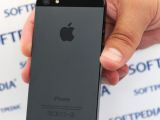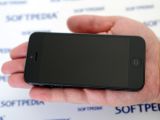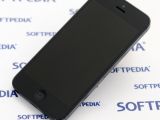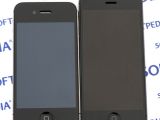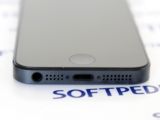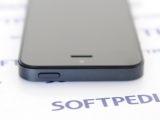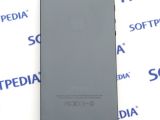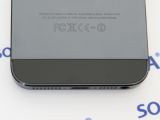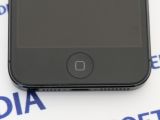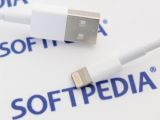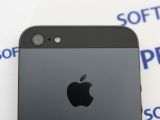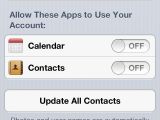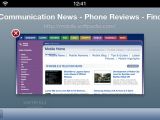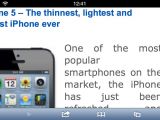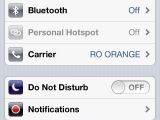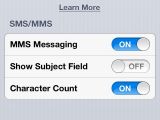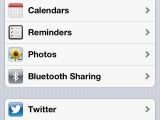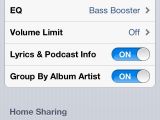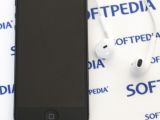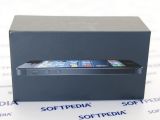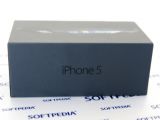It’s been almost a year since the iPhone 4S made it to the market, and Apple fans are about to get a taste of the next-generation iPhone device. Given the fact that the iPhone 4S was a slight improvement in comparison with iPhone 4, we were expecting Apple to come up with a completely different device this year.
Unfortunately, the iPhone 5 lacks the level of innovation that iPhone 4 offered when it was launched on the market, though it’s still a solid choice for customers who wish to upgrade from models older than 4S, or for newcomers in the Apple family.
The price difference between the iPhone 4S and the iPhone 5 is negligible, so those who wish to switch platforms should definitely choose the latest model released by Apple.
However, iPhone 4S owners will have to decide for themselves whether the slight improvements between the two models are really worth the money.
They will only get tad bigger screen, a faster processor and a lighter and slimmer form factor but, other than that, the iPhone 5 is far from being revolutionary (or resolutionary).
Unveiled on September 12, iPhone 5 pre-orders commenced on September 14. The device is now available for purchase in two color options, Black & Slate and White & Silver.
Customers will be able to grab the 16GB variant for $199 USD with a new two-year contract agreement, but only in the States. The 32GB and 64GB models will be available for purchase within the next few weeks for $299 USD and $399 USD, respectively.
Furthermore, customers in the UK will be able to buy the 16GB iPhone 5 for around £530, while the 32GB and 64GB flavors will go on sale for £599 and £699, respectively. These are off-contract prices and include VAT.
In Germany, the iPhone 5 is officially priced at €680 for the 16GB model, €790 for the 32GB, and €900 for the 64GB model. According to Apple, Europeans will be able to grab the iPhone 5 in about 3-4 weeks, so stay tuned for more updates on this one.
Design
The design is one of the more important traits of an iPhone device. Apple is well known for its innovative approach when it comes to looks, so we were expecting the iPhone 5 to be at least as impressive as the iPhone 4. Alas, the Cupertino-based company decided to play it safe and kept the same design line that made the iPhone 4 one of the most popular smartphones.
Obviously, there are some differences, especially when it comes to size and weight, but the overall impression is that both iPhone 4 and 5 look the same. This is not necessarily a bad thing, but it proves that Apple continues to play it safe, just like it did with the iPhone 4S.
Anyway, the iPhone 5 is 28g lighter than the 4S and measures 123.8 x 58.6 x 7.6 mm. As Apple stated, this is the thinnest, lightest and fastest iPhone. Keep in mind that iPhone 5 is NOT the slimmest smartphone on the market, as Phil Schiller, Apple’s senior vice president of Worldwide Marketing claimed two weeks ago.
Motorola has no less than three Android smartphones that are only 7.1mm thin, while Huawei, Fujitsu and Pantech have already launched even slimmer devices.
Form factor aside, iPhone 5’s chassis is packed in a different kind of case, which makes it lighter than the iPhone 4S, but less scratch-resistant. The anodized aluminum case seems to have been a less fortunate choice for iPhone 5, as media and customers who managed to grab the device ahead of its official release already report big issues with this kind of coating.
We’re not sure why the iPhone 5’s back cover is so prone to scuffs and scratches, but there’s a high chance that Apple didn’t make the anodized layer thick enough to better protect the aluminum alloy.
There may be other reasons as well, but Apple simply preferred to respond to these reports by saying that this is normal and that any aluminum device may scratch if not properly taken care of.
We did not want to test the back cover’s limits, so we cannot say how easily one may scratch or chip the anodized aluminum case, but we noticed that our Black & Slate iPhone 5 is a fingerprint magnet. What’s even worse is that cleaning it requires a certain level of patience and time.
Although the iPhone 5 is a tad longer than its predecessors, it features the same buttons and ports. The two volume buttons and the Mute toggle are placed on the left side of the smartphone, while the SIM tray can be found on the right side.
The 3.5mm audio jack port has been moved from the top side of the phone to the bottom. The usual charging connector on the bottom side has been replaced with a new Lightning port, which is not compatible with anything on the market. The top side only features the Power on/off button.
Back on the Lightning connector, it looks like those who purchase the iPhone 5 and already own some iPhone 4 (or 4S) accessories will have to buy some adapters in order to be able to use them with the former. However, keep in mind that not all accessories are compatible with these adapters, so make sure you read the label before making any purchase.
Another downside is the fact that the iPhone 5 only accepts nano-SIMs, another SIM standard invented by Apple, which increases the number of standards now available on the market to three. The good news is that you can cut your normal SIM to fit into the nano-SIM slot, though you will have to make it thinner as well.The 4.0-inch display features the same width as the iPhone 4S, but is now longer. The result is a rather weird 640 x 1136 pixels resolution, which is not yet supported by all iOS apps, so expect some of these apps to be displayed in a letterbox format.
Above the touchscreen there’s the usual proximity sensor and the in-call earpiece, along with the microphone which has been placed inside of the latter, and a 1.2-megapixel front facing camera. Below the 4-inch display, the standard Home button feels much smoother and easier to handle. The 8-megapixel camera on the back features a small LED flash to its right.
Overall, the iPhone 5 is much more compact than its predecessors. For some, the elongated form factor will be the main selling point, while for others the fact that it’s lighter will matter the most.
It’s also worth mentioning that iPhone 4 and 4S users will be less impressed by the new device, but first-time users will definitely be mesmerized by the iPhone 5’s slim and stylish look.
Display and Camera
These are among the few improvements that the iPhone 5 brings in comparison with iPhone 4 and 4S models. Firstly, the 4.0-inch display makes a difference due to the fact that it now shows a fifth row of icons, which improves its usability.
Secondly, the Retina display’s brightness and contrast have been enhanced, while the sensitivity of the screen got slightly better due to the fact that the screen is now embedded in the LCD. However, the difference between the iPhone 4S and 5 is barely noticeable.The touchscreen is protected by Corning Gorilla Glass coating and features an unusual 640 x 1136 pixels resolution (326 ppi pixel density).
Even though iPhone 5’s display may be one of the best in the LCD business, it’s not as breathtaking as the iPhone 4 screen was, especially on a market overpopulated with devices that boast mind-blowing AMOLED and Super AMOLED displays.
Another aspect that got improved is the sunlight legibility of the display. The iPhone 4S has an exceptional screen that is easy to read even when exposed to sunlight, but the iPhone 5’s display got a bit better. According to Apple, the iPhone 5 uses a different glass that reduces reflectivity.
The phone’s 8-megapixel rear camera features the same module as iPhone 4S, though we noticed the quality of the pictures has been slightly improved. Both iPhone 5 and 4S now come with a new feature called Panorama mode, which only works in portrait mode.
Camera interface only “suffered” minimal cosmetic changes, which means there are no settings that might affect the quality of the shots, except perhaps the LED flash option. Aside from the touch shutter, you will also be able to take shots with the volume buttons. This feature is available for iPhone 4, 4S and 5.
For those who wish to upgrade from iPhone 4S just because the iPhone 5 takes better pictures, the improvement is not worth the money. However, newcomers or those who own older models, including iPhone 4 might want to take this aspect into consideration.The iPhone 5 can also capture full HD (1080p) videos, though it only features mono sound. The quality of the videos is a bit better than of those captured with iPhone 4S. Aside from that, iPhone 5 comes with the much praised simultaneous image capture, which allows users to take pictures while recording videos.
Although this feature is only available for iPhone 5 users, it does not make a difference, given the fact that camera can only capture 2-megapixel photos instead of 8. Check out our short video sample here, along with the pictures below to make a better idea on the iPhone 5’s camera capabilities.
Menu and SoftwareThe iPhone 5 is the first device to come with iOS 6 onboard, but the new operating system is available for iPhone 4S and 4 owners as well, as an upgrade. There are several new features, improvements and tweaks added by iOS 6 in comparison with previous versions of the platform, but the user interface looks pretty much the same.
As we have already mentioned earlier, given the fact the iPhone 5 comes with a larger 4.0-inch display, users will be able to fit a fifth row of icons. The same goes for folders, which can now house an additional row of apps.
To create new folders you’ll need to hold your finger on an icon on the home screen and drop it on another icon of another app that you wish to be in the same folder with. You can than remove any of the two icons on the newly created folder, but if you remove all icons the folder will be deleted as well.You will notice that every application that you freshly install on the iPhone 5 now features a “New” stripe which tags it as a newly installed application. The stripe will disappear the moment you open the application. This feature has also been added in iOS 6, so iPhone 4S and 4 owners will have it as well.
There are slight changes in the Settings menu, such as the Bluetooth and Wi-Fi options, which are now placed on top of the list for easier access.There’s also a new option called Do Not Disturb, which allows users to set how notifications will behave according to their needs. For example, you can set the iPhone 5 to mute calls or to receive calls only from specific contacts. You can also set the phone to mute all notifications in a certain interval.
When it comes to new apps, the iPhone 5 comes with Passbook app, which is an alternative to Google Wallet, but without the NFC (Near Field Communication) functionality. This software allows users to handle electronic tickets, various coupons, loyalty cards and such.
The iPhone 5 does not come with the usual YouTube application or Google Maps, but the former can be installed via AppStore, while the latter has been replaced by the (in)famous Apple navigation application.iOS 6 seems to be Apple’s most obvious step for a Google-free environment. The company decided to remove two of the most popular Google apps from its latest version of iOS in an attempt limit its dependency on some of the services offered by the search giant company.
This also indicates that the iOS is finally a matured platform that can offer almost any service required by its users. Unfortunately, the Maps application offered by Apple is not quite what we expected and is still far behind Google’s own navigation software.Users complain of the application’s lack of exactitude when it comes to addresses. In addition, the Maps application does not offer offline navigation, which makes it rather useless when abroad. On the positive side, it looks gorgeous and offers an interesting 3D Flyover mode.
Although Apple said that it would continue to improve the application in the following months, rumor has it that the company plans to re-introduce a much better Google Maps app in the future.Two social apps are now deep integrated within iOS 6, Facebook and Twitter. The latest version of the platform allows users to combine info found on your Facebook contacts with those in the Phonebook. It can sync the calendar containing birthdays and other important info with contacts stored in the Phonebook as well.
Another important improvement introduced by iOS 6 eliminates the need for a computer in order to activate your newly purchased iPhone device. This is now done effortlessly via Wi-Fi connection, just like you can activate Android devices. You can also update the iPhone via Wi-Fi, as well as using iTunes on a Mac or PC.More importantly, Siri has been greatly improved and now supports more languages, such as Canadian English, French, Spanish, Italian, German, Italian, Korean, Mandarin and Cantonese.
You can now search for a certain POI or ask it to offer you detailed sports or movie info. You can even launch applications via Siri, something which had to be available in the first place.
The iPhone 5’s LED flash can be assigned for alerts and you can customize the device’s vibration for favorite contacts or specific events.
CommunicationUnlike iPhone 4S, the iPhone 5 comes in three different network options, so customers should check with their carriers before purchasing any of the three alternatives.
According to Apple, iPhone 5 supports quad-band GSM with LTE (bands 4 and 17), quad-band GSM with LTE (bands 1, 3 and 5) and CDMA with LTE (bands 1, 3, 5, 13 and 25). Most of these are supported by US carriers, but some European operators will also offer LTE support.
It is also worth mentioning that the device comes with dual-band Wi-Fi support, 2.4 GHz and 5GHz, as well as tethering and Bluetooth 4.0 with A2DP. Unfortunately, the latter is of little to no use, as the iPhone 5 does not allow users to transfer files through Bluetooth due to the lack the OBEX protocol.
Another innovation that sets the iPhone 5 apart from other Apple smartphones is the Lightning connector, which is a bit smaller than the microUSB port and quite faster. However, as we have already mentioned, it’s not compatible with iPhone 4S accessories, so you will need to purchase adapters in order to use it with iPhone 5.
The built-in GPS features A-GPS and GLONASS support and is exceptionally fast when it comes to satellite locking. However, we noticed that the device becomes slightly hot after 5-10 minutes of navigation, but this happens with most Android smartphones as well.The messaging area of the operating system does not offer anything new. iMessage is still available, but don’t forget to activate it from the Settings menu.
Apple’s own browser, Safari, has been improved and now offers a much smoother browsing experience. Aside from the fact that it’s a bit faster than previous versions, it now features a full screen mode. This is only available in landscape.
When it comes to telephony, the iPhone 5 looks marvelous on paper, though it’s rather mediocre in practice. What makes the iPhone 5 stand out is the fact that it supports HD Voice, but this is carrier-dependent, so not many users may be able to take advantage of this feature.While we have been more than content with the phone’s strong signal reception, we’ve been a bit disappointed by the in-call sound, which is not that crisp and clear as other flagship smartphones available on the market. However, we wouldn’t put this among the phone’s downsides, instead we think that Apple could have done a tad better job.
Processor and Memory
Apple’s iPhone 5 is equipped with a customized dual-core A6 processor clocked at 1.2 GHz, which is complemented by a triple-core PowerVR SGX543MP3 graphics processing unit. The latter offers much better performance than Galaxy S III’s Mali-400MP and HTC One X’s GeForce ULP GPUs.
In addition, benchmarks revealed that iPhone 5’s dual-core processor performance is close to that of quad-core CPUs embedded in the latest Android smartphones. In fact, this is iPhone 5’s strong point and the main trait that sets it apart from the iPhone 4S.
It is also worth mentioning that, given the JavaScript engine integrated in Apple’s chipset, iPhone 5’s Safari browser is one of the fastest on the market.When it comes to memory, the iPhone 5 is equipped with 1GB of RAM and 16GB/32GB/64GB of internal memory. You also get 5GB of free iCloud storage space, but Dropbox is an alternative as well in case you need more space.
Multimedia
Apple’s music player got cleaner and simpler, but retained its functionality, which means you will still be able to create, edit or delete playlists and songs without having to leave the application. Other than some cosmetic changes there’s nothing really new in this area.
Although the device offers a slew of Equalizer modes, you still won’t be able to customize your own mode. When it comes to sound quality, the iPhone 5 seems to be on par with the iPhone 4S, which means you won’t be disappointed at all if you purchase the device in order to listen to your favorite music while on the go.
The above, along with the new “EarPod” headphones make the iPhone 5 a solid alternative when it comes to music phones. The so-called EarPod headphones, though awkwardly-looking, have been especially designed to better fit one’s ears and produce much much better sound than the previous headphones.Keep in mind that the 3.5mm audio jack port has been moved from the top side of the phone to the bottom side.
The iPhone 5’s video player does not support XviD and DivX and cannot run .avi files, but you’ll be able to use iTunes in order to convert any .avi files to a supported format such as MPEG-4, M-JPEG, .mov and H.264. Additional alternatives are available via the AppStore. BatteryThe iPhone 5 drains energy from a 1440 mAh Li-Ion battery, which is rated by the manufacturer for up to 225 hours of standby time or up to 8 hours of talk time. We got around 3 days of full use with about 45 minutes of talking, 30 minutes of browsing, 25 minutes of GPS navigation.
However, we did not use Wi-Fi at all, which is known as a big battery life drainer. Overall, we were more than pleased with the iPhone 5’s battery life, which is among the strong points of the device.
Sales Package
iPhone 5 handset USB Power Adapter Documentation Apple EarPods with Remote and Mic 8-pin Lightning to USB Cable
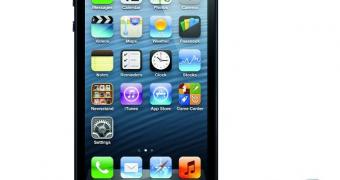
 14 DAY TRIAL //
14 DAY TRIAL // 


